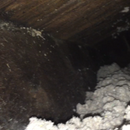Floor Joist
Hi,
I have a house that was built around 1900s. It does not have sill plates installed. The beams rest on the foundation bricks. The last beam at the back end of the house rests on a brick foundation. There is a slight air leakage between the beam and the foundation wall. With the help of an elongated plastic holder, I took cellulose insulation and loose filled the area near the foundation and the beam. I put in about 3 inches deep and 3 inches wide cellulose. I didn’t do this for the entire length of the beam because there is chimney. So the area I put cellulose is the corner of the house. I couldn’t air seal with silicone because I couldn’t reach that far. Since cellulose is a good air sealer, I used cellulose.
Please see attached.
Do you think this was a good practice? Once the cellulose settles somewhat, I’ll put in more cellulose.
GBA Detail Library
A collection of one thousand construction details organized by climate and house part











Replies
Cellulose isn't really a great sealing material. it tightens things up considerably if dense packed, not so much when loose-filled. Worse, it wicks & stores moisture, making contact with masonry risky. Ideally you would install something in space that behaves as a capillary break- cellulose is the opposite of that.
Closed cell polyurethane foam such as Dow Froth-Pak or expanding can-foam would is a far better choice for sealing gaps between masonry and wooden beams. If can-foam, it's possible to use flexible plastic tubing as an extension for reaching deep into locations where the straw-tip or gun tip can't access. It has to be tied tightly to keep from blowing off, but it makes sealing hard to reach areas possible.
Thank you Dana for the helpful information!